#Churchill Theatre
Text


9 notes
·
View notes
Text
"War's one of those things, don't you think, where everyone always thinks they're in the right, have you noticed that? Nobody ever says we're the bad guys, we're going to beat the shit out of the good guys."
Caryl Churchill - "A Number"
13 notes
·
View notes
Text
American Idiot @ Churchill Theatre Bromley 2016 (#10)
Title: American Idiot
Venue: Churchill Theatre Bromley
Year: 2016

Condition: Good condition
Author: Music by Green Day. Lyrics by Billy Joe Armstrong. Book by Billie Joe Armstrong and Michael Mayer
Director: Racky Plews
Choreographer: Racky Plews
Cast: Amelia Lily, Matt Thorpe, Alexis Gerred, Alice Stokoe, Cellen Chugg Jones, Emma Housley, Jemma Geanaus, Karina Hind, Lawrence Libor, Llandyll Gove, Lucas Rush, Steve Rushton, Ross William Wild, George Maguire, Davis Brooks, Amy Anzel
FIND ON EBAY HERE
2 notes
·
View notes
Text
Tues. Sept. 19: Re-envisioning the Week
image courtesy of Sh1ra from pixabay.com
Tuesday, September 19, 2023
Waxing Moon
Pluto, Saturn, Neptune, Chiron, Uranus, Jupiter Retrograde
Partly sunny/cloudy and cool
I hope you had a good weekend! Ready for our regular Tuesday catch-up?
Today’s serial episode is from Legerdemain:
Episode 121: Brother Risipi Comes to Help
Shelley enlists the monk to help the forger.
Legerdemain Serial…

View On WordPress
#ALCHEMY OF A BLACKBIRD#Boiler House Poets Collective#book review#books#Caryl Churchill#client work#CVS#CVS lies#episode videos#graphics#grocery#Harvey Fierstein#Ink-Dipped Advice#jury duty#Legerdemain#library#Michael&039;s#Moderna#Nightwood Theatre#notebooks#Pfizer#Pittsfield#Remedios Varos#residency application#rest#stress management#submissions#TD Bank Class Action Suit#THE MOMEN ON THE BRIDGE#vaccine cancellation
0 notes
Text
The Drifters Girl.
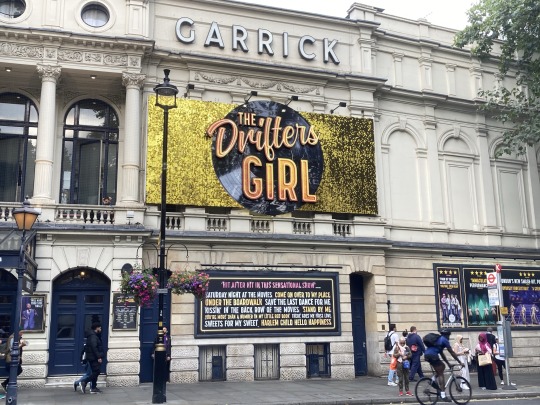
View On WordPress
0 notes
Text
Bringing revolution to Port Talbot - by Michael Sheen
On a recent February morning, I woke up to find I was wrong. Not a particularly uncommon experience in itself, but unusual to discover that on this occasion I was being publicly accused of it by the Secretary of State for Business and Trade. “Michael Sheen has said that ‘the people of Port Talbot have been let down’,” Kemi Badenoch wrote in the Daily Mail. “But he is wrong.”
It was a big day. I spent all of last year directing a three-part drama series for the BBC called The Way, which was to air that night. It begins in my hometown of Port Talbot, where a strike at the local steelworks becomes the spark that ignites a violent descent into national chaos. Clearly, Ms Badenoch had been given a sneak peek of the series before forming quite a strong opinion on it. But no: reading her article, Ms Badenoch admits that she hadn’t watched it at all. Why let a total lack of information prevent a full-throated denouncement, eh? Presumably, she also assumes that we managed to write, film and edit the entire series after Tata Steel announced the imminent loss of some 2,500 jobs at the steelworks mere weeks ago.
While the winds of change have only been blowing in one direction for many years, the events in our story were dreamed up some years ago and act as a fictional catalyst for all that follows. Surely even Tory ministers understand there is no VIP fast lane for making a TV series. This isn’t a PPE contract, after all…
Nothing to see here
After that episode aired, it occurred to me that such shenanigans in the right-wing press could have been about a couple of things. Since the ITV drama about the Post Office scandal, Mr Bates vs The Post Office, caused public outrage, I imagine the government has a new fear of the impact a TV show can have. A pre-emptive strike against a series it perceives to be criticising its actions around the steel industry must have seemed a useful tactic. And, having seen Breathtaking – based on Rachel Clarke’s memoir of how the Covid crisis unfolded in the NHS, which aired on ITV the same night as The Way – I wonder if her piece was an attempt to distract attention away from more dangerous territory.
It gave Ms Badenoch a chance to trot out her line about how the people of Port Talbot should be grateful for all that the government is doing to save the steel industry, not moaning about the impact job losses will have on their community. But the people of Port Talbot have been let down, no matter what Ms Badenoch wants us to think. Not by any single entity, but by years of neglect. That she immediately assumed my comments referred to her and her government tells its own story. In the words of a much older drama than mine: the lady doth protest too much, methinks.
Then and Nye
“This crisis is a privateering racket with your friends lining their pockets!” No, not an accusation against Boris Johnson, but something I currently say to Winston Churchill every night. We opened a new play called Nye at the National Theatre this week. I play Aneurin (“Nye”) Bevan, who attacks the prime minister for turning a wartime crisis into a money-making scheme for him and his cronies. It’s one of many moments in the play that seem to speak to past and present at the same time.
The entanglement of “now” and “then” is heightened by the fact that I am wearing pyjamas. Nye is lying unconscious in his hospital bed at the end of his life, and we follow him through a dream of his past. He wanders from childhood memories of overcoming his stutter in Tredegar library to his meteoric rise through local politics, to becoming the youngest member of Clement Attlee’s pioneering postwar cabinet. And, of course, as minister for health, his tumultuous birthing of the NHS on 5 July 1948. It’s an extraordinary, surprising
and moving experience telling this story on stage each night. That shared space between actors and audience, where all is felt but unseen, crackles with electricity.
Once more, with feeling
It seems that exploring the motives of politicians, the uses and abuses of political power, and the quest for justice that saw the creation of the NHS taps into deep wells of emotion. Like the pockets of gas that miners feared within the coal seam, their release brings risk and reward. At a recent show, we had three instances of people needing to be helped out of the theatre, the final one forcing us to pause the show moments from its end. Thankfully, it was nothing more serious than someone fainting. But emotions are running high.
I’m more than happy to invite Ms Badenoch to a performance. But I realise, of course, there’s no guarantee she would make it to the end.
165 notes
·
View notes
Text


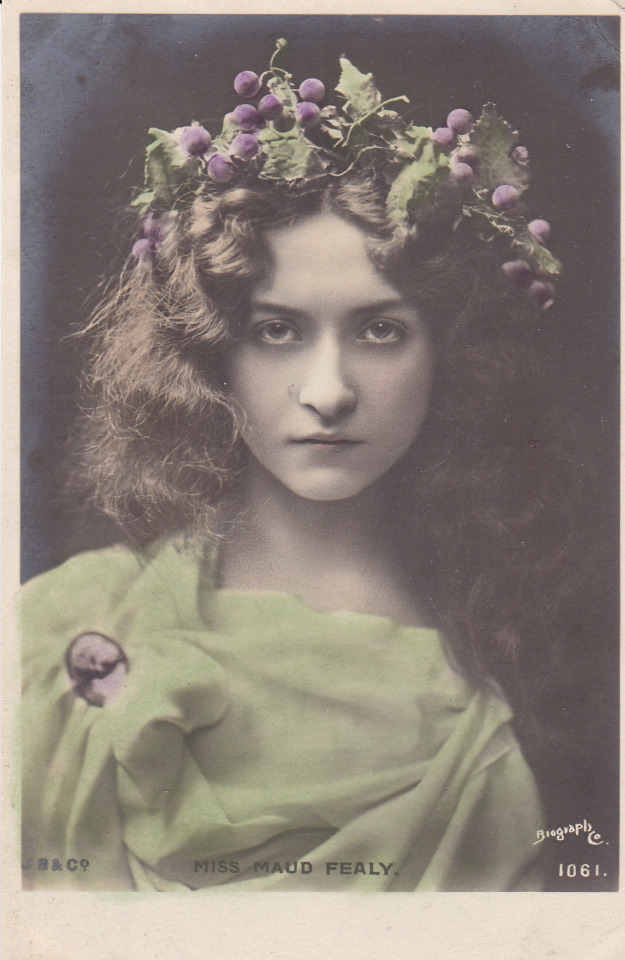
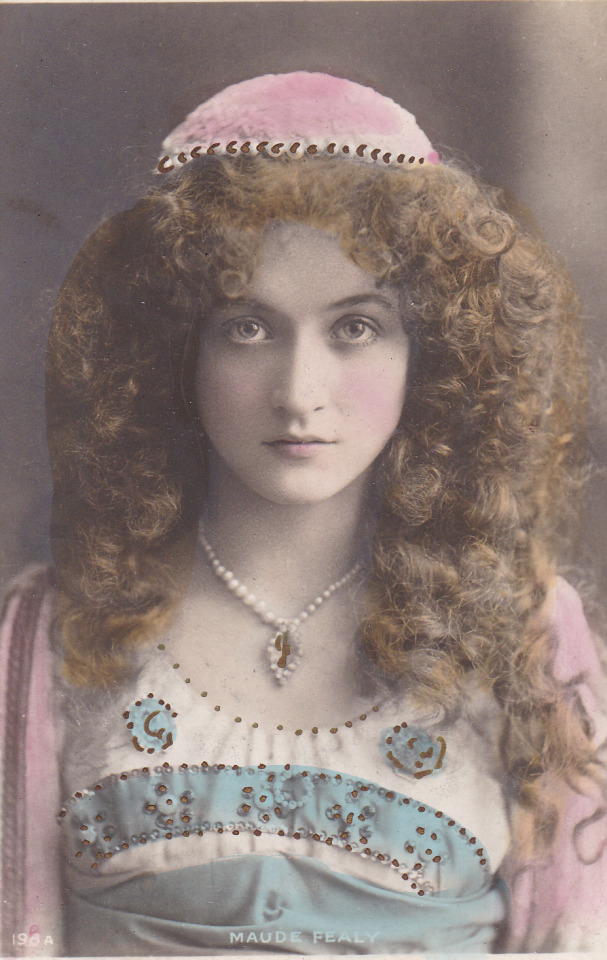



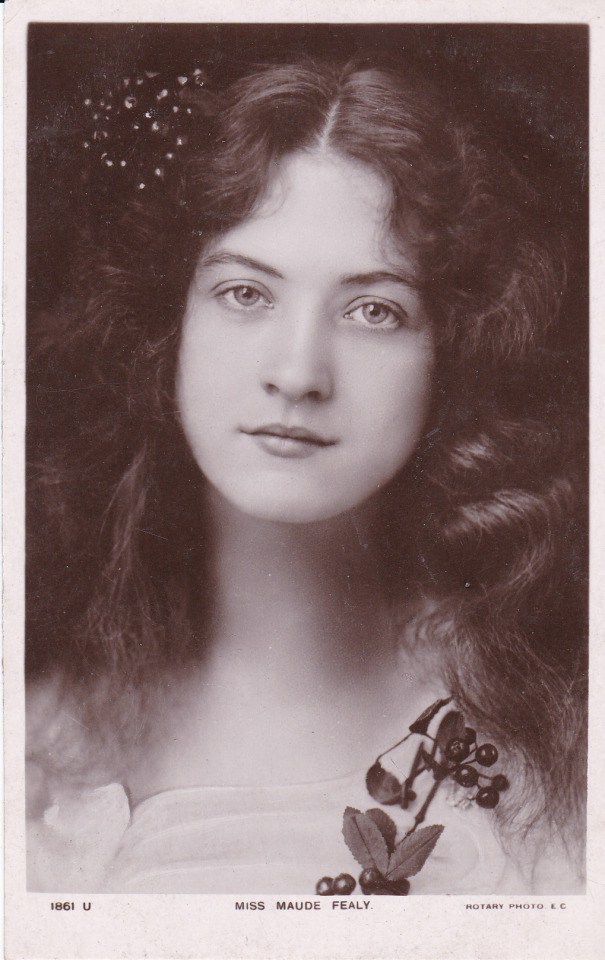
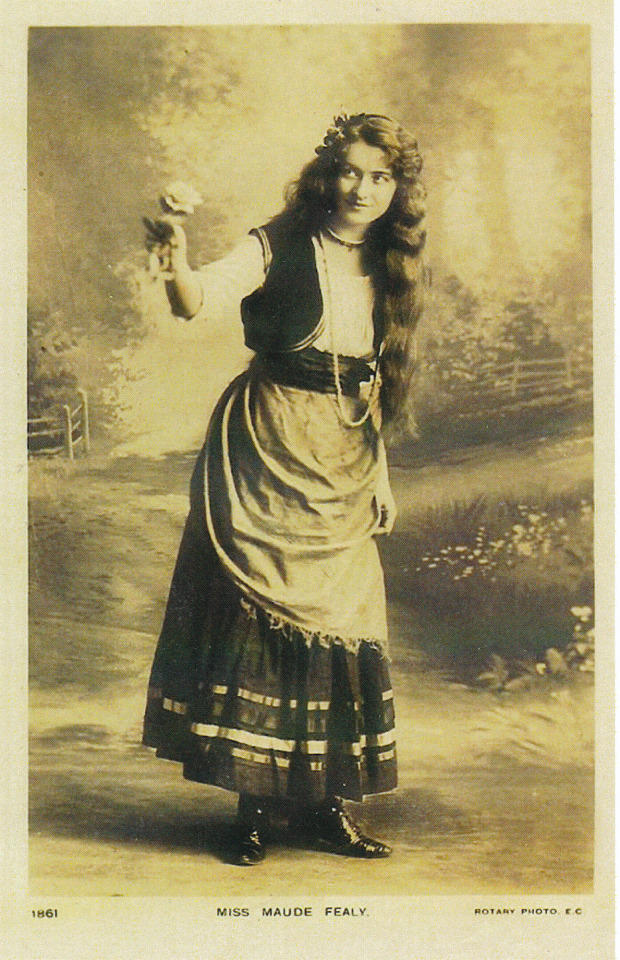



I posted the FAB silk postcard of the American actress, Maude Fealy a couple of weeks ago and said that I would post some more about her, here a are few more images of Maude from my collection of postcards and photographs.
The first postcard shows Maude as Alice Faulkner from the play 'Sherlock Holmes.' The third one shows Maude as Eunice from 'Quo Vadis'.
The sixth postcard shows a winning photograph by Burr McIntosh from the French magazine 'Paris Figaro Illustre.' Maude's photograph was sent to their competition (to find the most beautiful woman in the world) by the American photographer, William Burr McIntosh. Maude was the winner, chosen from out of 30, 000 entrants from all over the world.
Some information about Maude from Wikimedia.
Maude Mary Hawk was born on March 3/4, 1881-3 in Memphis, Tennessee (the dates vary depending upon the source) the daughter of actress Margaret Fealy and James Hawk, who divorced. Maude took her mother's name, Fealy.
In 1896, she made her debut at the Elitch Theatre in Denver playing various children's roles. Her first appearance was during the week of July 19 in Henry Churchill de Mille's The Lost Paradise. In 1905, Churchill de Mille's son Cecil B. DeMille was hired as a stock player at Elitch Theatre, and Maude appeared as the featured actress in several plays. Their friendship continued for decades, including when DeMille cast Maude in his film The Ten Commandments.
Maude made her Broadway debut in the 1900 production of Quo Vadis, again with her mother.
Maude toured England with William Gillette in Sherlock Holmes from 1901 to 1902. Between 1902 and 1905, she frequently toured with Sir Henry Irving's company in the United Kingdom, and by 1907, she was the star in touring productions in the United States.
In Denver, Colorado, Maude met a drama critic from a local newspaper named Louis Hugo Sherwin (son of opera singer Amy Sherwin). The two married in secret on July 15, 1907, because, as they expected, her domineering mother did not approve. The couple soon separated and divorced in Denver in 1909. Maude then married actor James Peter Durkin. He was a silent film director with Adolph Zukor's Famous Players Film Company. This marriage ended in divorce for non-support in 1917. Soon after this, Maude married John Edward Cort. This third marriage ended in a 1923 annulment and was her last marriage. She bore no children in any of the marriages.
Maude died on November 10, 1971.

192 notes
·
View notes
Text

The word “great” is somewhat promiscuously applied to actors. But it was undoubtedly deserved by Sir Michael Gambon, who has died aged 82 after suffering from pneumonia.
He had weight, presence, authority, vocal power and a chameleon-like ability to reinvent himself from one role to another. He was a natural for heavyweight classic roles such as Lear and Othello. But what was truly remarkable was Gambon’s interpretative skill in the work of the best contemporary dramatists, including Harold Pinter, Alan Ayckbourn, David Hare, Caryl Churchill and Simon Gray.
Although he was a fine TV and film actor – and forever identified in the popular imagination with Professor Albus Dumbledore in the Harry Potter franchise – the stage was his natural territory. It is also no accident that, in his private life, Gambon was an expert on, and assiduous collector of, machine tools and firearms for, as Peter Hall once said: “Fate gave him genius but he uses it as a craftsman.”
Off-stage, he was also a larger-than-life figure and a superb raconteur: a kind of green-room Falstaff. I have fond memories of an evening in a Turin restaurant in March 2006 on the eve of Pinter’s acceptance of the European Theatre prize. Gambon kept the table in a constant roar, not least with his oft-told tale of auditioning for Laurence Olivier as a young actor in 1963 and cheekily choosing to do a speech from Richard III; but the next night Gambon gave an explosive rendering of Pinter’s poem American Football that threatened to blow the roof off the Turin theatre.
However, Gambon’s bravura was also mixed with a certain modesty. In the summer of 2008 I met him for tea in London and found him eagerly studying the script of Pinter’s No Man’s Land, in which he was scheduled, several months later, to play Hirst. He told me that he had started work on it so soon because he found it difficult to learn lines at his age.
“Sometimes,” he said, “I sleep with a script under my pillow, or just carry it around in my raincoat pocket, in the hope the lines will rub off on me.” I think he was genuine; but with Gambon, one of life’s great leg-pullers, you were never entirely sure.
Gambon achieved greatness without either the formal training or genetic inheritance that are often considered indispensable.
He was born into a working-class Dublin family that had no artistic background; his mother, Mary (nee Hoare), was a seamstress, and his father, Edward, an engineer. When the family settled in Britain after the second world war, the young Gambon went to St Aloysius school for boys, in Somers Town, central London. On leaving at the age of 15 he signed a five-year apprenticeship with Vickers-Armstrongs, leading to a job as a tool-and-die maker. With his mechanical aptitude, he loved the work. But he also discovered a passion for amateur theatre and, having started by building sets, eventually moved into performing. “I want varoom!” he once said. “I thought, Jesus, this is for me.”
With typical chutzpah, he wrote to the Gate theatre in Dublin, creating a fantasy list of roles that he had played in London, including Marchbanks in Shaw’s Candida; in the end, he made his professional debut there in 1962 as the Second Gentleman in Othello. His best decision, however, on returning to London, was to sign up for an improvisational acting class run by William Gaskill at the Royal Court.
Gaskill was about to join the newly formed National Theatre company at the Old Vic and recommended Gambon for an audition: hence the celebrated story of Gambon’s first encounter with Olivier, which ended with the young actor, in his excess of zeal, banging his hand on a nail in an upstage column and bleeding profusely. Far from being the nail in Gambon’s coffin, this led to a productive four years with the National in which he progressed from walk-ons to substantial roles such as that of Swiss Cheese in Gaskill’s revival of Mother Courage.
On Olivier’s advice, however, Gambon left the National in 1967 to hone and pursue his craft at Birmingham rep – a shrewd move that saw him, at the astonishingly early age of 27, playing his first Othello. He moved on later to the Royal Shakespeare Company, and in 1968 made his first foray into television with the leading role in a BBC adventure series called The Borderers.
However, it was through working on another TV series, The Challengers, that he made a contact that was to transform his career. His fellow actor Eric Thompson was moving into directing, and in 1975 was set to do an Ayckbourn trilogy, The Norman Conquests, at the Greenwich theatre. He cast Gambon, against type, as a dithering vet.
He revealed, for the first time, his shape-shifting gifts; and the sight of him, seated at a dinner table on a preposterously low stool with his head barely visible above the table’s edge, remains one of the great comic images of modern theatre.
This led to a highly productive working relationship with Ayckbourn including key roles in Just Between Ourselves (Queen’s theatre, London, 1977) and Sisterly Feelings (National, 1980).
At the same time, Gambon began an association with Gray by taking over, from Alan Bates, the role of the emotionally detached hero in Otherwise Engaged (Queen’s theatre, 1976).
That was directed by Pinter, for whom in 1978 Gambon created the part of Jerry in Betrayal at the National. It was a production beset by problems, including a strike that threatened to kibosh the first night, but Gambon’s mixture of physical power and emotional delicacy marked him out as a natural Pinter actor. That power, however, manifested itself in the 1980s in a series of performances that staked out Gambon’s claim to greatness.
First, in 1980, came Brecht’s Galileo at the National: a superbly triumphant performance that brought out the toughness, obduracy and ravening intellectual curiosity of Brecht’s hero. It was a measure of his breakthrough that, as Gambon returned to his dressing room after the first night, he found the other actors in the National’s internal courtyard were shouting and roaring their approval. Two years later, Gambon returned to the RSC to play both a monumental King Lear and a ravaged Antony opposite Helen Mirren’s Cleopatra.
But arguably the finest of all of Gambon’s 80s performances was his Eddie Carbone in Arthur Miller’s A View from the Bridge, directed by Ayckbourn at the National (1987). It helped that Gambon actually looked like Miller’s longshoreman-hero: big and barrel-chested with muscular forearms, he was plausibly a man who could work the Brooklyn docks.
Gambon also charted Eddie’s complex inner life through precise physical actions. He stabbed a table angrily with a fork on learning that his niece had got a job, let his eyes roam restlessly over a paper as the niece and the immigrant Rodolpho quietly spooned, and buckled visibly at the knees on realising that a fatal phone-call to the authorities had ensnared two other immigrants. In its power and melancholy, this towering performance justified the sobriquet once applied by Ralph Richardson of “the great Gambon”.
When you consider that the decade also saw Gambon playing the psoriasis-ravaged hero of Dennis Potter’s TV series The Singing Detective (1986), you realise his virtuosity and range.
And that became even clearer in 1990 when he played the mild-mannered hero of Ayckbourn’s Man of the Moment (Globe theatre, now Gielgud, London), had another crack at Othello for Ayckbourn in Scarborough and appeared, in 1989, as a romantically fixated espionage agent in Pinter’s TV adaptation of Elizabeth Bowen’s The Heat of the Day: that last performance, alternately sinister and shy, was one of Gambon’s finest for television and deserved a far wider showing.
In later years Gambon successfully balanced his stage career with an amazingly prolific one in film and television. In Hare’s Skylight at the National in 1995 he combined the bulk and weight of a prosperous restaurateur with a feathery lightness – a skipping post-coital dance across the stage with the balletic grace often possessed by heavily built men.
Gambon was equally brilliant as a disgusting, Dickensian, accent-shifting Davies in a revival of Pinter’s The Caretaker (Comedy theatre, 2000), as a perplexed bull of a father in Churchill’s A Number (Royal Court, 2002), as a Lear-like Hamm in Beckett’s Endgame (Albery, 2004) and as a brooding, alcoholic Hirst in Pinter’s No Man’s Land (Duke of York’s, 2008). Even if Gambon’s Falstaff in a 2005 National Theatre production of Henry IV Parts One and Two did not quite match expectations, his work for the theatre revealed an ability to combine volcanic power with psychological depth and physical delicacy.
Ill health and increasing memory problems forced him to retire from stage acting in 2015, but not before he had given memorable performances in two Beckett plays: Krapp’s Last Tape (Duchess, 2010) and All That Fall (Jermyn Street theatre, 2012), where he played, opposite Eileen Atkins, the sightless but stentorian Mr Rooney.
He also continued to work in television and film for as long as possible. He belied the whole notion of the small screen by giving large-scale performances as the black sheep of a big family in Stephen Poliakoff’s Perfect Strangers (2001) and as a reclusive plutocrat in the same writer’s Joe’s Palace (2007).
He was nominated for awards for his performances as Lyndon Johnson in an American TV movie, Path to War (2002), and as Mr Woodhouse in a BBC version of Jane Austen’s Emma (2009). Later TV series included The Casual Vacancy (2015), Fearless (2017) and Little Women (2017).
In film, he had a rich and varied career that ranged from the violent hero of Peter Greenaway’s The Cook, the Thief, His Wife and Her Lover (1989), to a heavyweight mafia boss in Mobsters (1991), the aged Lord Marchmain in Brideshead Revisited (2008), a cantankerous old director in Dustin Hoffman’s Quartet (2012) and the bearded Hogwarts headteacher (whom he privately referred to as “Dumblebore”) in six of the eight Harry Potter films, taking over the role for Harry Potter and the Prisoner of Azkaban (2004) following the death of Richard Harris.
He also provided the narration for the Coen brothers’ Hail, Caesar! (2016) and voiceovers for the two Paddington films (2014 and 2017).
But Gambon brought to everything he did, in life as well as art, enormous gusto, a sense of mischief and a concern with precision: he was almost as happy restoring old firearms as he was working on a new role.
In 1992 he was appointed CBE, and six years later was knighted.
He married Anne Miller in 1962, and they had a son, Fergus. From a subsequent relationship with Philippa Hart, whom he met on the set of Gosford Park, he had two sons, Michael and William.
He is survived by Anne and his three sons.
🔔 Michael Gambon, actor, born 19 October 1940; died 27 September 2023
Daily inspiration. Discover more photos at Just for Books…?
50 notes
·
View notes
Note
3 and 6 for Matt please
3) Who depends on them. & something they lost, but would love to have back
These days? No one lol. Every once in a blue moon, Alfred needs his emotional support canuck or some backup or another pair of hands or a second pair of eyes. He might smack Matt on the shoulder like, "what would I do with out you, dude?" but that's a shakey premise on a good day. Love doesn't correspond 1:1 with need. Arthur is much more enmeshed with Europe whether he likes it or not. Jack and Zee go into the Pacific whether he likes it or not.
The picture differed greatly between the early Cold War and World War Two. Matt was this incredibly important bridge between two empires. I think we, myself included, sleep on this as a community. But so do even Canadian historians, unless they have a taste for diplomatic history. Just how important Canada was not only to the Americans and the British as two entities but how little would have gotten done in the North Atlantic without the ability to keep shit running, and everyone getting along just gets lost in the more dramatic stories. No one will make a movie like Saving Private Ryan or Dunkirk about boring stuff like food logistics or submarine hunting. Or if they do, the protagonist is going to be an American. British units serving next to Americans all across the European theatre dragged Canadian officers with them to do what essentially became anglo-to-anglo translation. We have this picture from the top down of Churchill and Roosevelt, but on every level below that, Canada is the great facilitator. To the point it causes conflict with India, Australia, South Africa and France. Even the USSR got a bit miffed about the influence of Canada in the early UN. At one point, he was this hinge between the power brokers and held enormous power. It's a lot of emotional intelligence that my autistic ass is kind of shit at writing, but the sheer influence he held for about 20 years is just so intense.
There was also a time when he was absolutely indispensable to his father. Need a war crime committed? The spare is prepared. More than half of the UK's food between 1940 and 1944 was Canadian, including 77% of wheat. By '44, More than 45% of RAF ground crews? Canadian. More than a quarter of the pilots were also Canadian. The entire gold reserve of the British Empire was smuggled to Montreal quietly and competently even most economic historians don't even remember its a thing. If it was asked of him, he did it, and he did it well.
But that was a very long time ago now. And perhaps, as L.P. Hartley put it, the past is another country. And I think Matt of today misses that time. Not the blood and treasure lost, not the strain, and god knows not the empire or even the rest of it, really. But there was that snapshot in time where he spoke and was heard. Before the French decided the Francophone soul of Canada was again politically expedient and did their damndest to tear it out, Matt was in so many ways, a stupidly important power broker. But that was long before he became a negative space where any echo of what Americans are or are not sounds.
21 notes
·
View notes
Text
Welcome, my dear humans to this... rambling?
Yes, I think that´s probably it. I´m just going to analise the Good Omens Season 2 Opening, talk about a few things that caught my attention, do some innacurate predictions and probably make more questions that are not gonna be solved (not even when the season actually gets released).
That being said, I apologise for tha will I´m about to write. But I had nowhere else to write it, so bear with me, okay?
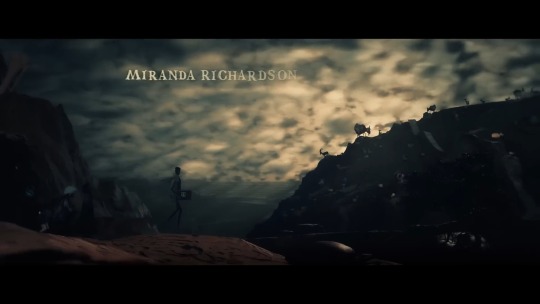
Okay, we begin with a sequence pretty similar to the opening for the first season. Where´s this? I wonder.
But there´s two things that inmediately caught my attention, as Crowley and Aziraphale begin their particular procession across the fields.
The first one, there´s a person walking with a box on their hands. That same box has a couple of arrows signaling upwards and I can tell it´s also the same symbol we saw on at least one of the promotional posters of GO S2. So it´s probably the thing Gabriel had to deliver, if we go with theories plus what was said in the sneak peeks.
The second thing here... Why are here so many goats? Is this a hell reference?
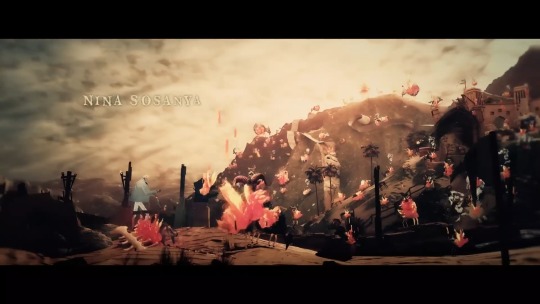
So now we set the goats on fire because why not, and there´s a building on the top right that gives me ancient roman vibes (nevermind me guys, the clear thing here is that we´re soon all going to hell and more people will join the charade).

We keep going to a cementery now with people following the angel and demon and there´s a few tombstones with eyecatching things written on them.
"Jane Austen", says in one and I wonder why.
"Here lies the former shell of Beelzebub", in another (which clearly makes reference to the fact they changed the actress for that part).
"Everyday", in reference to the song.
And also "Here lies Adam"...
Wait, Adam? What the actual f-

Anyway, so now they finally descend to hell and I can just tell by the chair and computer set in there what whoever has that administrative job is not getting paid enough for this shit.

Back up in the Earth I´m finally able to spot Muriel (sorry guys, I´m real shit to spot characters in these things) and we´re clearly in the middle of World War II, as you can see by the Winston Churchill signs and all the destructive ambience very fit for that historical period.
Now, what I wanted to talk about was the movie that´s being announced, "Stairway to Heaven". I´m going to leave down here the summary because I think it might be interesting:
"Returning to England from a bombing run in May 1945, pilot Peter Carter's plane is damaged and his parachute ripped to shreds. He has his crew bail out safely, but figures it is curtains for himself. He gets on the radio, and talks to June, a young American woman working for the U.S. Army Air Forces, and they are quite moved by each other's voices. Then he jumps, preferring this to burning up with his plane. He wakes up in the surf. It was his time to die, but there was a mix-up in heaven. They couldn't find him in all that fog. By the time his "Conductor" catches up with him twenty hours later, Peter and June have met and fallen in love. This changes everything, and since it happened through no fault of his own, Peter figures that heaven owes him a second chance. Heaven agrees to a trial to decide his fate."
So we got a miracle, a romance and heaven and hell involved in conflict... Does it sound familiar to you?
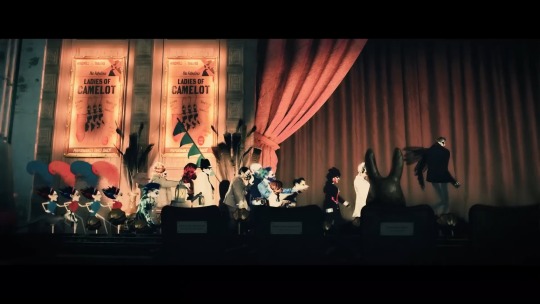
As we keep walking rabbits start to fall from the sky and I feel as we approach the theater the time has come for Aziraphale to do his so much awaited magic show.
So, there´s a few things to point out here as well.
For starters, the posters of The Ladies of Camelot (that I´m guessing are the showgirls), those same ladies joining the procession and... have you noticed this is the first time in these openings where Aziraphale is not walking with Crowley but joining him later at the stage, dressed as magician?
And so here goes one of my crazy theories: what if the scene in the trailer where we see Aziraphale surprised at the theatre is because he´s surprised Crowley arrived? Surely we also see a whadow before him and it could also be something completely different and scary... But then again, if what Aziraphale is seeing at that second is real bad stuff, why are the showgirls in the background looking amused?

The theater curtain opens and we get this scene when, again for the first time, Crowley and Aziraphale fly together. Like, literally together, not one after the other as until now.
Wasn´t Crowley proposing to run away to another galaxy together last season? (ah, of course they´re not going to do that now, they got things to do on Earth).
But I´m hopeful we can see where these people were before the beginning of times, before the Eden, when Crowley was still an angel and helped creating galaxies. I read somewhere a theorie that he might be Raphael or (and I thing this is more plausible) someone close to Raphael. So yes, we´ll see where this goes...
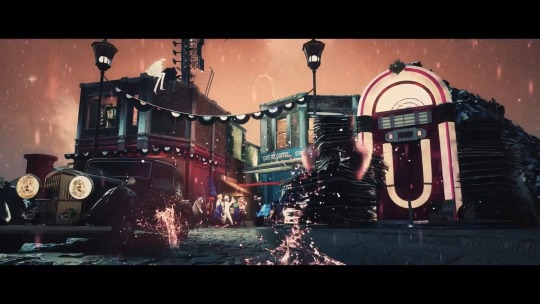
Back on Earth we can see Crowley and Aziraphale sitting together on the bookshop roof and, have I mentioned since the space thingy now are raining hearts? What is this? And who was the genius who thought putting "Give me coffee or give me death" to a coffee shop was a good idea? (ah, we all know this and we love Neil for it, just saying).
Anyway, I´m so glad to see the Bentley again. And all those discs... Will it be so important the constant repetition of the song Everyday? Why? And had it something to do with the fact Crowley´s car has a similar problem and no matter what CD he puts it always plays a Queen song?
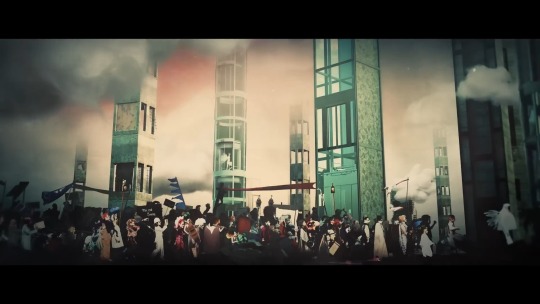
People´s announcing the "Second Coming" which could very well be a reference of Season 2 and we don´t need to panic yet.
But there´s a lot of elevators here, with angels inside, so we can fairly guess it´s time to go to heaven (and it´ll probably be the last stop).
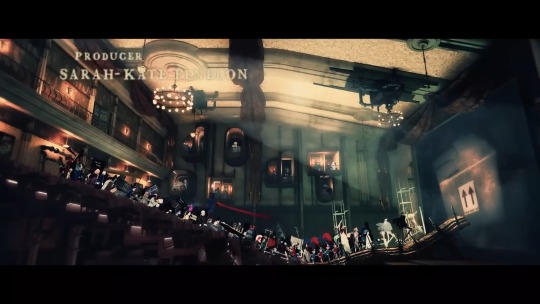
But before that, and notice that no one in this procession uses an elevator, they get to this cinema where "The Arrival" is screening.
Could it be a reference of the movie of the same title or just a hint because the first episode of this season is titled like that? I´m gonna go for this last theorie, because it makes more sense to me.
The same symbol (arrows pointing upwards) that were in Gabriel´s box are now here in the screen...
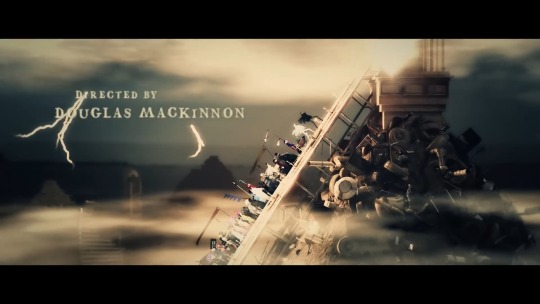
Finally, all these people get to heaven not by the usual system (the elevators) but by some stairs and under it there´s a lot of stuff piled that I´m not going to analise because I basically blind at this point (my fault, don´t cancel me).
Can I guess here there´ll be more conspiracies with heaven involved?

#good omens#good omens season 2#ineffable husbands#aziraphale#anthony j crowley#neil gaiman#terry pratchett#good omens fandom#crowley
60 notes
·
View notes
Text


5 notes
·
View notes
Text
THIS DAY IN GAY HISTORY
based on: The White Crane Institute's 'Gay Wisdom', Gay Birthdays, Gay For Today, Famous GLBT, glbt-Gay Encylopedia, Today in Gay History, Wikipedia, and more … April 14

April 14, 1962 Description: People mailing their taxes.

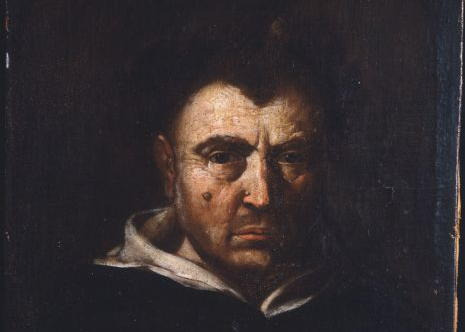
1600 – Italy: Philosopher Tomasso Campanella (1568-639) is jailed, spending twenty-seven years imprisoned in Naples in various fortresses. He was a Dominican friar, Italian philosopher, theologian, astrologer, and poet.
He is overheard saying to his cellmate: "O Father Pietro, why don't you do something so that we may sleep together, and we may get pleasure?" Pietro replied "I wish I could, and I'd even bribe the gaolers with ten ducats. But to you, my heart, I would like to give twenty kisses every hour."
Campanella was finally released from prison in 1626, through Pope Urban VIII, who personally interceded on his behalf with Philip IV of Spain. Taken to Rome and held for a time by the Holy Office, Campanella was restored to full liberty in 1629. He lived for five years in Rome, where he was Urban's advisor in astrological matters.

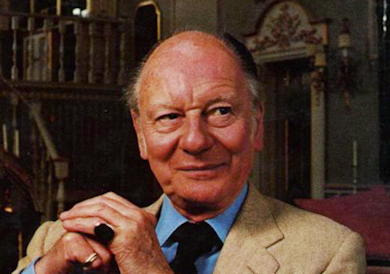
1904 – Born: Sir John Gielgud (d.2000), long acknowledged as one of the greatest British actors of the twentieth century. A highly versatile performer, he played leading and character roles on both stage and screen, in every genre from classical tragedy to low comedy. While in many ways reticent about his sexuality, his experiences illustrate the significant changes in public attitude towards homosexuality over the decades.
Arthur John Gielgud was born in London on April 14, 1904 to a family with theatrical backgrounds on both sides. His father was the son of a Lithuanian actress, and, through his mother, he was the great-nephew of Dame Ellen Terry, the most renowned British actress of the nineteenth century.
Gielgud began acting in his teens, joining the Old Vic theater company in 1921, and making his film debut in the silent picture Who Is That Man? (1923). Soon thereafter, Gielgud became Noël Coward's understudy, eventually taking over the lead roles in Coward's play The Vortex (1924) and Margaret Kennedy's The Constant Nymph (1924). Other successes followed quickly, as Gielgud began to play major Shakespearean roles at the Old Vic, beginning with Romeo, and, before he was thirty, the more mature lead roles in Richard II, The Tempest, Macbeth, Hamlet, and King Lear.

Gielgud as Hamlet
During this time, he began his first major relationship. Actor John Perry lived with him until their separation in the early 1940s.
By the 1930s, Gielgud was a box-office idol—a rather unlikely one, given his bulbous nose and unprepossessing figure; indeed, his detractors thought his Romeo "feminine." His great gifts were his cat-like mobility and, most notably, his expressive voice, which fellow actor Sir Alec Guinness described as being "like a silver trumpet muffled in silk."
Gielgud also became a respected stage director, launching his own distinguished company in 1937 at the Queen's Theatre. He directed and often performed in productions of Shakespeare and such classics as School for Scandal, Three Sisters, and The Importance of Being Earnest. In 1953, Gielgud was named in Queen Elizabeth's Coronation Honors List as the recipient of a rather belated knighthood. That this honor came about at all was a result of two of his colleagues, Sir Laurence Olivier and Sir Ralph Richardson, pleading with Prime Minister Winston Churchill to remedy the grievous oversight.
As Gielgud's homosexuality was generally known if not publicly acknowledged in a time when sexual acts between men were still a criminal offense in Britain (and remained so until 1967), the government had been reluctant to bestow its approval on him. Given the controversy over his knighthood, it was cruelly ironic that within months of receiving the honor, Gielgud was involved in an embarrassing incident that might have been fatally damaging to his career.
During the early 1950s, British legal authorities conducted a veritable persecution of gay men that resulted in criminal charges against a number of prominent figures. Gielgud was arrested outside a public lavatory in Chelsea for "importuning for an immoral purpose," and the press conducted a vitriolic campaign against him. Gielgud nonetheless received a standing ovation upon his next stage appearance, and his arrest is thought to have been instrumental in starting the process of decriminalization. (The incident did not, moreover, prevent the Queen from granting him two further distinctions, the Companion of Honour [1977] and the Order of Merit [1996].) But, having been so deeply humiliated, Sir John never spoke publicly about the matter or his sexuality again, and he was banned from entering the United States for the next four years.
After World War II, Gielgud's career shifted, as he began to appear with greater frequency in the character roles for which he is now best remembered. With the advent of the "Angry Young Men" of the 1950s, Gielgud's acting style was greatly out of fashion on the British stage, and, accordingly, he appeared more frequently in motion pictures. He acted in more than 130 films in his long career, the greater portion of which were made between the 1960s and the 1980s; and in 1982 he received the Academy Award for Best Supporting Actor for his portrayal of the sardonic butler in Arthur.
Finding it increasingly difficult to commit lengthy dialogue to memory, Gielgud retired from the stage in 1988, but continued to perform in films, nearly until the end of his life. At the age of eighty-six, he had his first nude scene in Prospero's Books (1991), and he subsequently appeared in Shine (1996), The Portrait of a Lady (1996), and Elizabeth (1998).
In 1999, he was deeply bereaved by the death of his partner Martin Hensler, with whom he had lived for nearly forty years. Within months, on May 21, 2000, Gielgud himself passed away quietly at his home in Aylesbury, Buckinghamshire, at age ninety-six.


1906 – Elmyr de Hory (born Elemér Albert Hoffmann; d.1976) was a Hungarian-born painter and art forger, who is said to have sold over a thousand art forgeries to reputable art galleries all over the world. His forgeries garnered celebrity from a Clifford Irving book, Fake (1969); a documentary essay film by Orson Welles, F for Fake (1974); and a biography by Mark Forgy, The Forger's Apprentice: Life with the World's Most Notorious Artist (2012).
De Hory claimed that he was born into an aristocratic family, that his father was an Austro-Hungarian ambassador and that his mother came from a family of bankers. However, subsequent investigation has suggested that de Hory's childhood was, more likely, of a middle-class variety; he was born Elemér Albert Hoffmann. (An acquaintance, Fernand Legros, said that de Hory was born in Budapest (Hungary) 14 April 1905, but that de Hory would change the date to 1914 to appear younger.) Both his parents were Jewish. His father's occupation was listed as "wholesaler of handcrafted goods." His parents did not divorce when he was sixteen, as he had asserted in the Clifford Irving biography.
At the outbreak of the Second World War, de Hory was imprisoned in a German concentration camp for being both a Jew and a homosexual. (While his homosexuality was proven over time, investigation into his past has shown the likelihood that he was at one time christened as a Calvinist. Such an ostensible conversion did not stop the Nazi government from targeting people who were born Jewish for extermination.) He was severely beaten and was transferred to a Berlin prison hospital, from which he escaped. He returned to Hungary, and it was there, he said, that he learned that his parents had been killed and their estate confiscated. However, according to Mark Forgy's account, both de Hory's mother and brother were listed as Holocaust survivors.
On arriving in Paris after the war, de Hory attempted to make an honest living as an artist, but soon discovered that he had an uncanny ability to copy the styles of noted painters. He began to sell his Picasso pastiches to art galleries around Paris, claiming that he was a displaced Hungarian aristocrat and his offerings were what remained from his family's art collection or else that he had acquired them directly from the artist, whom he had known during his years in Paris.
In 1959, suffering from depression, he attempted suicide by overdosing on sleeping pills. A friend rescued him and called an ambulance. His stomach was pumped, and after a stay in the hospital de Hory convalesced in New York City, helped by an enterprising young man, Fernand Legros. Legros' account of his dealings with de Hory differs substantially from de Hory's own. He portrays de Hory as an aggressive and persistent con man, who suckers Legros into the belief that he is a needy impoverished aristocrat deserving of Legros's charity, whereas in reality he is a person wanted by Interpol under a multitude of different aliases and convicted of a variety of crimes, forgery and fraud being not the least of them; de Horys is object of pursuits, convictions and expulsions from France, Switzerland, Italy, Federal Germany, Great Britain, from Mexico, from the United States, from Canada, for false check writing without funds, check forgery, forgery carrying a false name, theft, receiver and purveyor of stolen goods, and embezzlement.
In de Hory's account, Legros accompanied de Hory back to Miami where he continued to regain his health. When he imprudently took Legros into his confidence, the other man quickly recognized an opportunity and importuned the artist to let him sell his work in exchange for a 40% cut of the profits, with Legros assuming all the risks inherent in the sale of forgeries.
With Legros, de Hory again toured the United States. In time, Legros demanded his cut be increased to 50%, when in reality Legros was already keeping much of the profit. On one of these trips Legros met Réal Lessard, a French-Canadian who later became his lover. The two had a volatile relationship, and in late 1959 de Hory decided to leave the two and return to Europe.
In Paris, de Hory unexpectedly once more ran into Legros. De Hory revealed to him that some of his forgeries were still back in New York. According to de Hory, Legros devised a plan to steal the paintings and sell them, making a name for himself and his art gallery in the process. Later that year, de Hory's account continues, Legros persuaded de Hory to resume their partnership. Legros and Lessard would continue to sell de Hory's work and agreed to pay him a flat fee of $400 a month, enough to guarantee de Hory a comfortable and risk-free life in his newfound home, the Spanish Mediterranean island of Ibiza.
De Hory always denied that he had ever signed any of his forgeries with the name of the artist whom he was imitating. This is an important legal matter, since painting in the style of an artist is not a crime—only signing a painting with another artist's name makes it a forgery. This may be true, as Legros or Lessard may have signed the paintings with the false names.
In 1964, now 58 years old, de Hory began to tire of the forgery business, and soon his work began to suffer. Consequently, many art experts began noticing that the paintings they were receiving were forgeries. Some of the galleries examining de Hory's work alerted Interpol, and the police were soon on the trail of Legros and Lessard. Legros sent de Hory to Australia for a year to keep him out of the eye of the investigation.
De Hory continued to elude the police for some time but, tired of life in exile, decided to move back to Ibiza to accept his fate. In August 1968, a Spanish court convicted him of the crimes of homosexuality, showing no visible means of support, and consorting with criminals (Legros), sentencing him to two months in prison in Ibiza. He was never directly charged with forgery because the court could not prove that he had ever created any forgeries on Spanish soil. He was released in October 1968 and expelled from Ibiza for one year. During that time he resided in Torremolinos, Spain.
One year following his release, de Hory, by then a celebrity, returned to Ibiza. He sold his story to Clifford Irving, who wrote the biography Fake! The Story of Elmyr de Hory the Greatest Art Forger of Our Time. De Hory appeared in several television interviews and was featured with Irving in the Orson Welles documentary F for Fake (1973). In Welles's film, de Hory questioned what it was that made his forgeries inferior to the actual paintings created by the artists he imitated, particularly since they had fooled so many experts and were always appreciated when it was believed that they were genuine. In F for Fake, Welles also poses questions about the nature of the creative process, how trickery, illusion, and duplicity often prevail in the art world, and thus, in some respects, downplays the culpability of the art forger de Hory and outliers like him.
During the early 1970s, de Hory again decided to try his hand at painting, hoping to exploit his newfound fame: this time, he would sell his own, original work. While he had gained some recognition in the art world, he made little profit, and he soon learned that French authorities were attempting to extradite him to stand trial on fraud charges. This took quite some time, as Spain and France had no extradition treaty at that time.
On December 11, 1976, de Hory's live-in bodyguard and "companion" Mark Forgy informed him that the Spanish government had agreed to extradite de Hory to France. Shortly thereafter, de Hory took an overdose of sleeping pills, and asked Forgy to accept his decision and not intervene or prevent him from taking his life. However, Forgy later went for help to take de Hory to a local hospital, though en route he died in Forgy's arms. Clifford Irving has expressed doubts about de Hory's death, claiming that he may have faked his own suicide in order to escape extradition, but Forgy has dismissed this theory.

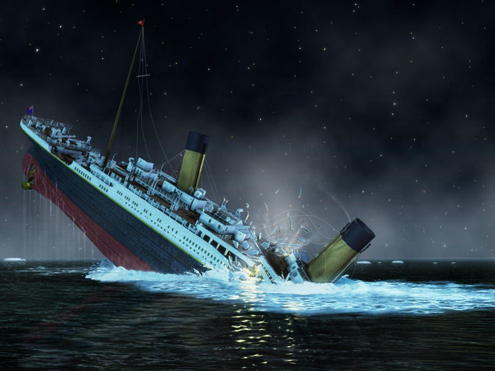
1912 – The RMS Titanic strikes an iceberg just before midnight on April 14th. By 2:20 AM, she broke apart and foundered, taking over one thousand three hundred people still aboard to their deaths. Just under two hours after the Titanic foundered, the Cunard liner RMS Carpathia arrived on the scene of the sinking, where she brought aboard an estimated 705 survivors. Among the known gay people who died on the Titanic were crew members second carpenter Michael Brice and Third Officer Sam Maxwell as well as Archibald Willingham Butt who served as an influential military aide to U.S. presidents Theodore Roosevelt and William Howard Taft.


1935 – Erich von Däniken is a controversial Swiss author best known for his claims about extraterrestrial influences on early human culture, in books such as Chariots of the Gods?, published in 1968. Von Däniken is one of the main figures responsible for popularizing the paleocontact and ancient astronaut hypotheses.
Von Däniken is a co-founder of the Archaeology, Astronautics and SETI Research Association (AAS RA). He developed a theme park called Mystery Park in Interlaken, Switzerland, which opened on May 23, 2003 and closed on November 19, 2006.
His 26 books have been translated into more than 20 languages, selling more than 60 million copies worldwide, and his documentary TV shows have been viewed around the world.
Von Däniken's run-ins with the law started at an early age. In the 1960s, Von Däniken worked in hotels and restaurants across Switzerland, and then he was convicted of fraud, serving a prison sentence for defrauding his boss at one hotel. In 1967, soon after Chariots of the Gods was published he was arrested and charged by Interpol with fraud and tax evasion for non-payment of US$14,000.00. On behalf of the prosecution, he was ordered by the Court to undergo psychological examinations, and labelled a homosexual, reflecting a time when being homosexual carried a negative stigma. During the investigation, authorities uncovered a large personal debt totaling about US$700,000. Von Däniken was found guilty of embezzlement, and he served more than three years in Swiss prisons. While in prison, he continued writing, and 'Return of the Gods' was subsequently published.


Dan Roos (L) with Lisa Kudrow & Dan Bucatinsky
1955 – Don Roos is an American screenwriter and film director. Roos was born in New York. He attended the University of Notre Dame in Indiana. After graduating, Roos moved to Los Angeles, where he pursued a career writing for television.
Roos began his writing career when he had a friend of his impersonate an agent and represent him; a phone call led to a job with playwright Mart Crowley (The Boys in the Band), who at the time was Executive Producer of Hart to Hart. Roos went on to write for The Colbys, Nightingales, and other TV shows, before his spec scripts led to feature film writing assignments. His first major film was 1991's Academy Award-nominated Love Field, an interracial drama starring Michelle Pfeiffer and Dennis Haysbert.
Roos' work as the writer of the film Single White Female has earned him a permanent space in Hollywood movie trivia, since that title has entered the lexicon in reference to the film's psychopathic lead character who begins to take on her roommate's identity.
Roos is well-known for his work writing strong and engaging female characters. Ironically, In a 1999 interview in The Advocate, Roos stated that prior to scripting Boys on the Side and The Opposite of Sex, "as a Hollywood screenwriter, I was used to disguising my gay characters as heterosexuals" because of homophobia in the film establishment. His use of an interracial attraction in Love Field, for example, was a way of talking about "a love that dare not speak its name." Roos explained that he used women to stand in for gay men dealing with emotional conflict because "men are still stuck in that ridiculous '50s attitude. They're never allowed to play real fear or any kind of weakness. Women get to play all those feelings." Roos won a Best First Feature Independent Spirit Award for The Opposite of Sex.
In 2000, Roos served as the executive producer of All Over the Guy (2001), a comedy about four friends—a gay couple and a straight one—on an often bumpy road to romance. The assignment gave him the opportunity to work with his life partner since the mid-1980s, writer and actor Dan Bucatinsky.
Roos has appeared at numerous glbtq film festivals, including three at his alma mater, Notre Dame, but he severed that connection after the 2006 event, prior to which the school's president, the Reverend John Jenkins, had condemned the name of the Queer Film Festival as one that would "celebrate and promote homosexual activity" in contravention of Catholic doctrine."I will never come back to Notre Dame again--ever," declared Roos. "When I come here, all I feel is hate. They don't want me here. They don't want me to have my daughter [in the same house] with my boyfriend. They think I will burn in hell. Would Anne Frank go back to Bergen-Belsen?"
Adopting a child in 2005 was a source of great joy for Roos and Bucatinsky. Roos supports a woman's right to choose abortion but was glad to find a woman who not only decided to carry through her pregnancy but also chose a gay couple as the adoptive parents for the child, who was born in Wisconsin. Roos and Bucatinsky were able to file an amended birth certificate in California, with both of their names listed as parents.


1987 – Mississippi creates a "Sex Offense Criminal History Record Information" program. It creates a state registry of convicted sex criminals, including for consensual sodomy. Employers are permitted to request information about employees from it.


10 notes
·
View notes
Text
Thoroughly Modern Millie @ Churchill Theatre Bromley 2017 (#155)
Title: Thoroughly Modern Millie
Venue: Churchill Theatre Bromley
Year: 2017

Condition: Good condition
Author: Book by Richard Morris and Dick Scanlan. New music by Jeanine Tesori. New Lyrics by Dick Scanlan
Director: Racky Plews
Choreographer: Racky Plews
Cast: Joanne Clifton, Lucas Rush, Sam Barrett, Graham Macduff, Jenny Fitzpatrick, Katherine Glover, Nick Len, Andy Yau, Catherine Mort Emma Housley, Alice Baker, Laura Marie Benson, David Muscat, Marios Nicolaides, Lotty Somers, Laura Wilson, Bobby Windebank
FIND ON EBAY HERE
0 notes
Text
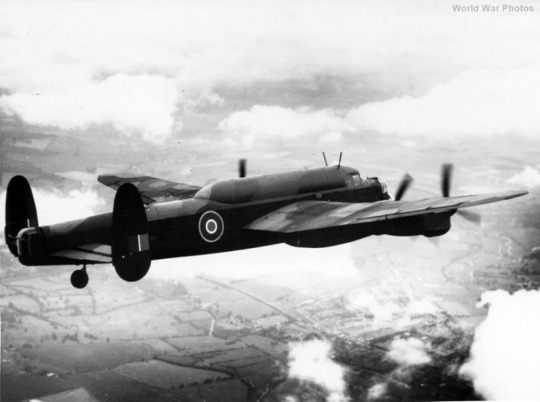
As the war in Europe come to its conclusion thoughts started to turn to the Pacific and the planned invasion of Japan, codenamed Operation Downfall. The 'Tiger Force' was to be Bomber Command's contribution to this as they would provide a number of squadrons to help in the build up to the invasion.
Contents
Second Quebec Conference
Operation Mould
The 'Tiger Force'
Modifying the Lancaster
Order of Battle
The War Ends
The Force is Disbanded
Key Dates
23rd November 1944
Operation Mould unveiled.
24th February 1945
Air Marshal Sir Hugh Lloyd appointed commander of the 'Tiger Force'.
April 1945
The make up of the 'Tiger Force' is changed.
4th June 1945
Churchill approves the use of bases on Okinawa.
20th June 1945
First 'Tiger Force' convoy leaves Liverpool.
23rd July 1945
Second 'Tiger Force' convoy departs.
31st October 1945
'Tiger Force' disbanded.
Second Quebec Conference (1944)
Between the 12th and 16th September a number of meetings were held between the American and British Governments involving British Prime Minster Winston Churchill and American President Franklin D. Roosevelt. During these the idea of using Avro Lancaster's of Bomber Command to attack targets in Japan was raised. This lead to an offer for 40 Lancaster squadrons to be made available for use in the Pacific, only once the hostilities in Europe had ceased, to be made by Churchill to the United States.
The US Chiefs of Staff, in principle, accepted the offer of the Lancaster squadrons on the 27th October 1944. The major obstacles for this plan was the availability of airfields in range of Japan and how to get, not only the Lancasters and their crews, but all the necessary support staff and infrastructure the nearly 14,000 miles by sea to the Pacific theatre which would take around 2 ½ months by sea.
Operation Mould
The 23rd November 1944 saw Operation Mould unveiled. These plans would see three groups each comprising of 12 heavy bomber squadrons equipped with either the Lancaster, Consolidated B-24 Liberator and the Avro Lincoln when it became available. Six long-range fighter squadrons comprising a number of aircraft including the Hawker Tempest Mk II and the de Havilland Hornet, when it became available. Alongside this the Australian First Tactical Air Force, equipped with the Supermarine Spitfire and Curtiss P-40 Kittyhawk, along with the United States Far East Air Force, equipped with the Republic P-47 Thunderbolt and North American P-51 Mustang, would also be used for escort. A number of B-24 Liberators and Lancasters would also be converted to tankers for air-to-air refuelling.
This would become known as the 'Tiger Force' on the 24th February 1945 with Air Marshal Sir Hugh Lloyd being appointed its commander.
The 'Tiger Force'
As planning continued during early 1945 the end of April saw the make up of the force changed. This saw the six long-range fighter squadrons dropped from the order of battle, the air-to-air refuelling plan was also shelved and the 36 heavy bomber squadrons reduced to 20. There were also some new additions with four transport and one each of an air-sea rescue, Pathfinder and photo reconnaissance/meteorological squadron.
One of the major headaches was where the new force would be based. Two of the early options, neither of which was ideal, was to be based in the Philippines at North Luzon, which at best was 1,000 miles away from the force's envisaged targets. The second option was that the Royal Air Force built its own airbases from scratch. Whichever option was chosen the major phase of construction would require at least 100,000 men, not to mention the machines and logistics to support this endeavour.

Avro Lancaster in the 'Tiger Force' camouflage scheme of white and black © ww2images.com
On the 1st April 1945 the Allies invaded the Okinawa Islands, known as Operation Iceberg, and this battle would last until the 22nd June 1945. Prior to the end of this battle negotiations between the British and Americans had seen the US Chiefs of Staff propose the use of an airfield on Okinawa for the 'Tiger Force' which Winston Churchill approved on the 4th June 1945. Whilst this airfield would only have space for half of the 20 'Tiger Force' squadrons there were two main benefits. The British and the Americans would share the engineering and logistics of building the airfields and Okinawa was just 400 miles south of Japan, well within the Lancaster's range.
Two convoys were soon on their way, the first left Liverpool on the 20th June and was known as Shield. With the second convoy leaving on the 23rd July and this was known as Vacuum.
Modifying the Lancaster
Due to the very different conditions of the Pacific compared to Europe a number of modifications were made to the Lancaster. Firstly instead of the normal seven man crew this was reduced to six and the Rolls-Royce Merlin 24 engine was installed, along with the necessary tropical engine modifications. Other changes saw the installation of the landing gear that was to be used on the Avro Lincoln and new radio & navigation equipment. All these changes lead to the aircraft used being renamed Lancaster B.I (FE) and Lancaster B.VII (FE).
Another major change to the Lancaster was its camouflage scheme. The standard Bomber Command scheme in Europe was black undersides with green and brown on top, for the Lancasters in the 'Tiger Force' the black underside was kept but the top was painted in a heat reflecting white.
One of the ways to increase the Lancaster's range, alongside air-to-air refuelling was the addition of a 'saddle tank' behind the cockpit. This could hold an extra 1,200 imperial gallons of fuel and a pair of Lancaster B.Is (HK541) and (SW244) would be modified accordingly and this was called the Very Long Range Lancaster. This idea was discarded in favour of air-to-air refuelling which was then itself unnecessary after the airbases on Okinawa became available.

Lancaster Mk. B.I (SW244) with the 'saddle tank' modification.
Order of Battle - 26th July 1945
The first of the ten 'Tiger Force' squadrons, each with 20 aircraft, which would be under Air Marshal Sir Hugh Lloyds command were chosen from No. 5 Group, Royal Air Force and No. 6 Group, Royal Canadian Air Force. With the first five squadrons to be ready by the 1st December 1945 and the next five ready by February 1946. The force would be part of the United States Strategic Air Forces in the Pacific commanded by General Carl Spaatz, which had been established on the 2nd July 1945, with representatives of the RAF on General Spaatz's staff.
The first ten squadrons would be organised as follows:
551 Wing No. 9 Squadron
No. 617 Squadron Lancaster B.I and B.III
Lancaster B.VII (FE)
552 Wing No. 106 Squadron
No. 467 Squadron, Royal Australian Air Force Lancaster B.I and B.III
Lancaster B.I and B.III
553 Wing No. 83 Squadron
No. 97 Squadron
No. 627 Squadron Lancaster B.I and B.III
Lancaster B.I and B.III
Mosquito Mk XVI and Mk XIX
554 Wing No. 75 Squadron, Royal New Zealand Air Force Lancaster B.I and B.III
662 Wing No. 419 Squadron, Royal Canadian Air Force
No. 428 Squadron, RCAF Lancaster B.X
Lancaster B.X
It was intended to phase out the Lancaster from these squadrons with the Avro Lincoln, which had made its first flight on the 9th June 1944, with No. 57 Squadron, RAF East Kirkby and No. 75 Squadron, RNZAF, based at RAF Spilsby, receiving the first Lincolns to be delivered during August 1945.
A third ship was to set sail on the 25th August 1945, this was in response to a request by General Spaatz for a pair of Tallboy Squadrons, Tallboy was a 12,000lb bomb which only the Lancaster could be equipped with, by the 15th October to fly from bases on Okinawa and play a role in the build up to the expected invasion of Kyushu, known as Operation Olympic, which was to begin on the 1st November 1945. This was part of Operation Downfall which was the overall plan to invade Japan.

Lancaster Mk. B.VII (FE) (NX750) of No. 9 Squadron, RAF in its 'Tiger Force' colours during 1946.
The War Ends
Whilst the preparations for the 'Tiger Force' had been progressing the Allies Manhattan project, tasked with developing an atomic bomb, had completed and successfully tested one in New Mexico, America on the 16th July 1945. The following month saw the Allies drop the first atomic bombs in war when a Boeing B-29 Superfortress dropped one on the Japanese cites of Hiroshima on the 6th August 1945 and again three days later on the 9th August 1945 on Nagasaki.
The dropping of the second atomic bomb on the 9th had been preceded the day before by the Soviet Union's declaration of war on Japan which saw offensives launched in the North, East and West of Manchuria. As a result on the 10th August 1945 Japan offered to surrender and after negotiations on the 15th August 1945 the surrender of Japan was confirmed and on the 2nd September 1945 was formally signed. The Second World War (1939 – 1945) was over.
The Force is Disbanded
The two convoys Shield and Vacuum which had left the UK in June and July respectively and were to go to Okinawa were instead re-routed to Hong Kong, where they helped in the building of a new airfield. The 'Tiger Force' was officially disbanded on the 31st October 1945.
@classicwarbirds via X
9 notes
·
View notes
Text
CW: mention of being overwhelmed, swearing
Today was a bit of a rollercoaster
Took my dad to watch Nye at the National Theatre. I bought the tickets back in November and we've been looking forward to it. Dad's an old Labour party member, through-and-through Socialist, with Aneurin Bevan being one of his absolute heroes. He even got to see him speak, in person, when he was just a child.
He's also a fan of Michael Sheen's work like me (well, not quite like me... We just appreciate him in different ways...)
Anyway, long complicated journey to get there because of the trains being messed up. We arrive to find that unfortunately Sheen is unwell and unable to perform. Some friends found out he'd also not been able to perform yesterday or do stage doors for a few nights, apparently.
These things happen, got to let it roll off you like water off something's back, right?
The problem is that I don't do great with change at the best of times so I was terrified I was going to get overwhelmed and ruin the day. Bear in mind that we were actually meant to go in March but had to change the tickets due to a family event being put in place after I had already booked the tickets (that's... that's a whole other complicated thing)
And then my dad, who this entire trip has really been all for, must have seen the look on my face. He softly said, "oh, it's ok. No need to feel despondent! I'm sure it will be lovely anyway." It was just such a sweet thing to hear that I sort of compartmentalised and reminded myself that, whilst seeing Sheen pretend to be a deer on stage would have been a highlight (yes, that happens in the play), this was his day out.
You know what? It was lovely. The understudy, Lee Mengo, was fantastic. The play was beautiful and funny; it reminded me why the NHS is so vital, and how criminal it is that it's been undermined and under-funded for so long.
I asked dad afterwards if he enjoyed it. He thought it was wonderful, timely and made him remember what a titan Bevan had been (as well as what a cunt Churchill was - dad's words but also mine).
I let my friends in discord know and they were incredibly sweet and supportive. One of them has even volunteered to come see it with me next week as they haven't seen the play. Even better: it's going to be a sensory-adapted performance, so I'm intrigued about what that looks like. I also really want to see it again because I'm dying to see Michael Sheen live, and how his performance differs.
Hopefully he's feeling better soon. I'm honestly astounded at the workload actors maintain over several weeks in shows like these so it shouldn't be a massive surprise that people get ill.
Just feeling very grateful for having wonderful family, friends, and a partner who gave me a massive hug when I got home
#nye michael sheen#national theatre#Michael Sheen#personal#autistic things#actually autistic#theatre
10 notes
·
View notes
Text
The 2024 Shortlist
The BBC’s 13th Annual Celebration of Audio Drama

2023 marked the centenary year for audio/radio drama at the BBC. For 100 years of this unique genre, audio drama and comedy have provided enjoyment, diversion, illumination, insight and escape for listeners, evolving in approach and style as audio practitioners have responded to new ideas and technology with ingenuity, imagination and inspiration. These awards celebrate the creativity of actors, writers, directors, producers, musicians, sound designers and all who work in this vibrant art-form.
The winners will be announced on Sunday 24 March 2024 in a ceremony in the Radio Theatre at BBC Broadcasting House London. The winners of the Imison and Tinniswood Awards (judged and administered by the Society of Authors and the Writers’ Guild of Great Britain) will also be announced at this ceremony.
Best Original Single Drama
Benny and Hitch by Andrew McCaldon, producers Neil Varley and Tracey Neale, BBC Audio Drama London
Churchill versus Reith by Mike Harris, producer Gary Brown, BBC Audio Drama North
Dear Harry Kane by James Fritz, producer Sally Avens, BBC Audio Drama London
Eat and Run by Paolo Chianta, producer Lorna Newman, BBC Audio Drama North
Rare Earth by Richard Monks, producer Nicolas Jackson, Afonica
Voices From the End of the World by Lucy Catherine, producer Sasha Yevtushenko, BBC Audio Drama London
Best Adaptation
The Age of Anxiety by W.H.Auden, adapted by Robin Brooks, producer Fiona McAlpine, Allegra Productions
Beowulf Retold based on the version by Seamus Heaney, producer Pauline Harris, BBC Audio Drama London
Bess Loves Porgy by Edwin DuBose Heyward, adapted by Roy Williams, producer Gill Parry, feral inc
The Dark is Rising by Susan Cooper, adapted by Robert Macfarlane and Simon McBurney, producer Catherine Bailey, Catherine Bailey Productions and Complicite
If on a Winter’s Night a Traveller by Italo Calvino, adapted by Tim Crouch and Toby Jones, producer Nadia Molinari, BBC Audio Drama North
One Moonlit Night by Caradog Prichard, adapted by Rhiannon Boyle, producer Emma Harding, BBC Cymru Wales
Best Original Series or Serial
The 5000 by Sebastian Baczkiewicz, producers Gaynor Macfarlane, BBC Scotland
An Eye for a Killing by Colin Macdonald, producer Bruce Young, BBC Scotland
Flirties, written and produced by Jess Simpson, Audiocraft
There’s Something I Need to Tell You by John Scott Dryden and Misha Kawnel, producer Emma Hearn, Goldhawk Productions
The Tomb by Sebastian Baczkiewicz, producer Joby Waldman, Reduced Listening
Trust by Jonathan Hall, producer Gary Brown, BBC Audio Drama North
Best Actor
Hiran Abeysekera, Dear Harry Kane, director Sally Avens, BBC Audio Drama London
Max Irons, The Bronze Horseman, director Susan Roberts, BBC Audio Drama North
Toby Jones, If on a Winter’s Night a Traveller, director Nadia Molinari, BBC Audio Drama North
Lorn Macdonald, Confessions of a Justified Sinner, director Kirsty Williams, BBC Scotland
Tim McInerny, Benny & Hitch, director Tracey Neale, BBC Audio Drama London
Tom Walker, Call Jonathan Pie, Alison Vernon-Smith, Yada-Yada Audio
Best Actress
Gabrielle Brooks, Bess Loves Porgy, director Michael Buffong, feral inc
Dinita Gohil, Victory City, producer Alison Crawford, BBC Bristol
Maxine Peake, The Women of Troy, director Nadia Molinari, BBC Audio Drama North
Rosamund Pike, People Who Knew Me, director Daniella Isaacs, Merman
Lydia Wilson, Happy Birthday, Mr President, director Gaynor Macfarlane, BBC Scotland
Fenella Woolgar, Lines in the Sand: The Journeys of Gertrude Bell, director Jessica Mitic, BBC Audio Drama North
Best Supporting Performance
Sacha Dhawan, Anna Karenina, director Nadia Molinari, BBC Audio Drama North
Erin Doherty, The Seagull, director Toby Swift, BBC Audio Drama London
Mark Heap, Kafka’s Dick, director Dermot Daly, Naked Productions
Sophia Del Pizzo, There’s Something I Need to Tell You, director John Scott Dryden, Goldhawk Productions
The Marc Beeby Award for Best Debut Performance
Izzy Campbell, Of a Night, director Jessica Mitic, BBC Audio Drama North
Rosie Ekenna, Faith, Hope and Glory, director Anastasia Osei-Kuffour, BBC Audio Drama London
Rosalind Eleazar, Hindsight, director Gaynor Macfarlane, BBC Scotland
Jadie Rose Hobson, Exposure, director Anne Isger, BBC Audio Drama London
Dan Parr, The Test Batter Can’t Breathe, director Tracey Neale, BBC Audio Drama London
Olivia Triste, Rise, director Dermot Daly, Naked Productions
Best Sit Com or Comedy Drama
Call Jonathan Pie by Tom Walker, producer Alison Vernon-Smith, Yada-Yada Audio
Kat Sadler’s Screen Time by Kat Sadler and Cameron Loxdale, producer Gwyn Rhys Davies, BBC Studios Audio
Michael Spicer: Before Next Door by Michael Spicer, producer Matt Tiller, Starstruck Media
Mockery Manor by Lindsay Sharman, producer Laurence Owen, Long Cat Media
She Stoops to Conquer by Oliver Goldsmith, adapted by Barunka O’Shaughnessy, producer Emma Harding, BBC Cymru Wales
Where to, Mate? devised by Jo Enright, Peter Slater, Abdullah Afzal, Nina Gilligan, Andy Salthouse, Keith Carter, Jason Wingard, producer Carl Cooper, BBC Studios Audio
Best Stand Up Comedy
Daliso Chaponda: Citizen of Nowhere by Daliso Chaponda, additional material Meryl O’Rourke, producer Carl Cooper, BBC Studios Audio
Janey Godley: The C Bomb by Janey Godley, producers Julia Sutherland and Richard Melvin, Dabster Productions
Maisie Adam: The Beautiful Game by Maisie Adam, producer Georgia Keating, BBC Studios Audio
Olga Koch: OK Computer by Olga Koch and Charlie Dinkin, producer Benjamin Sutton, BBC Studios Audio
Rob Newman on Air by Rob Newman, producer Eloise Whitmore, Naked Productions
Sarah Keyworth: Are You a Boy or a Girl by by Sarah Keyworth, additional material Ruby Clyde, producer James Robinson, BBC Studios Audio
Best Use of Sound
The Adventurers, sound by Alisdair McGregor, producer Boz Temple-Morris, Holy Mountain
The Dark is Rising, sound by Gareth Fry, producer Catherine Bailey, Catherine Bailey Productions and Complicité
Hamlet Noir, sound by David Chilton, Lucinda Mason Brown, Weronika Andersen, producers Charlotte Melén, Carl Prekopp and Saskia Black, Almost Tangible
Slow Air, sound by Alisdair McGregor and Eloise Whitmore, producer Polly Thomas, Naked Productions
Voices From the End of the World, sound by Peter Ringrose, producer Sasha Yevtushenko, BBC Audio Drama London
The Women of Troy, sound by Sharon Hughes, producer Nadia Molinari, BBC Audio Drama North
Best Podcast Audio Drama
Badger and the Blitz by Richard Turley and Darren Francis, producer Richard Turley, Roxo Ltd
Below by Aaron Gray and Paul Skillen, producer John Wakefield, HTM Television
Flirties, written and produced by Jess Simpson, Audiocraft
The Haunter of the Dark – The Lovecraft Investigations by Julian Simpson, producer Sarah Tombling, Sweet Talk Productions
The Salvation by Justin Lockey, Jeffrey Aidoo, and AK Benedict, producers John Hamm and Boz Temple-Morris, Holy Mountain and Free Turn
Tagged by Brett Neichin and John Scott Dryden, producer Emma Hearn, Sony Music Entertainment and Goldhawk Productions
Best European Drama
Evicted by Karel Klostermann, adapted by Tomáš Loužný, producer Renata Venclová, CZR Czech Radio
Faust (I Never Read It) by Noam Brusilovsky, producer Andrea Oetzmann, SWR Südwestrundfunk with Deutschlandfunk
Irina’s Soul Is Like a Precious Piano by Rona Žulj, producer Katja Šimunić, Croatian Radiotelevision
The Sick Bag Song by Nick Cave, adapted by Kai Grehn, producer Lina Kokaly, Radio Bremen
The Supervisor by Nis-Momme Stockmann, producer Michael Becker, NDR Norddeutscher Rundfunk
This Word by Marta Rebzda, producer Waldemar Modestowicz, Polish Radio Theatre
-- WooHOO! The Haunter of the Dark, part 4 of The Lovecraft Investigations, is up for a BBC Audio Drama Award! I am made up!
10 notes
·
View notes